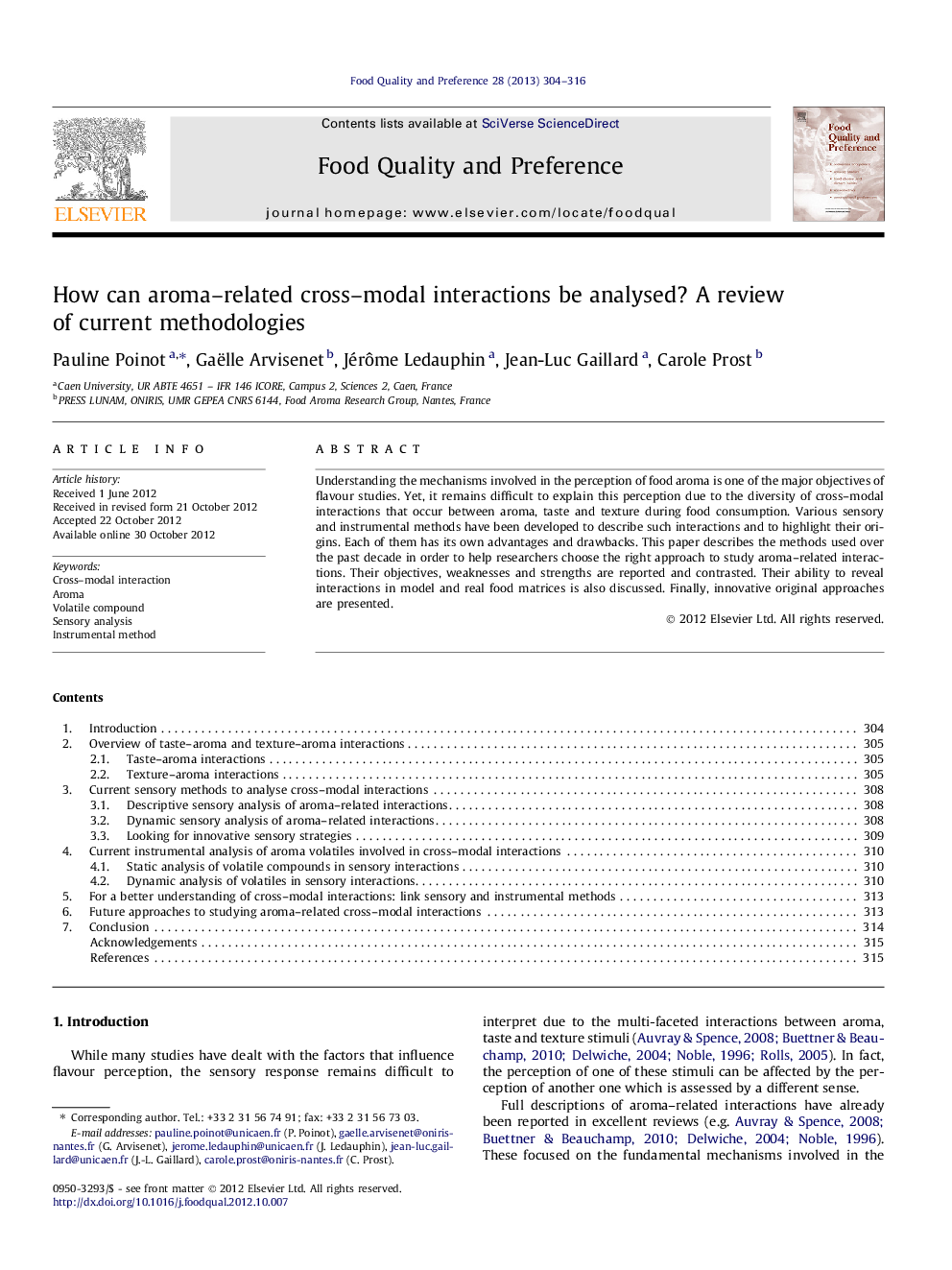| Article ID | Journal | Published Year | Pages | File Type |
|---|---|---|---|---|
| 4317382 | Food Quality and Preference | 2013 | 13 Pages |
Understanding the mechanisms involved in the perception of food aroma is one of the major objectives of flavour studies. Yet, it remains difficult to explain this perception due to the diversity of cross–modal interactions that occur between aroma, taste and texture during food consumption. Various sensory and instrumental methods have been developed to describe such interactions and to highlight their origins. Each of them has its own advantages and drawbacks. This paper describes the methods used over the past decade in order to help researchers choose the right approach to study aroma–related interactions. Their objectives, weaknesses and strengths are reported and contrasted. Their ability to reveal interactions in model and real food matrices is also discussed. Finally, innovative original approaches are presented.
► Current methods which allow to analyse aroma–related interactions are reviewed. ► The purposes, strong and weak points of the methods are reported and contrasted. ► Their ability to reveal interactions in model and real food matrices is discussed. ► Future approaches which allow to study complex stimuli are presented. ► This review should help researchers to choose the right approach to study aroma–related interactions.
